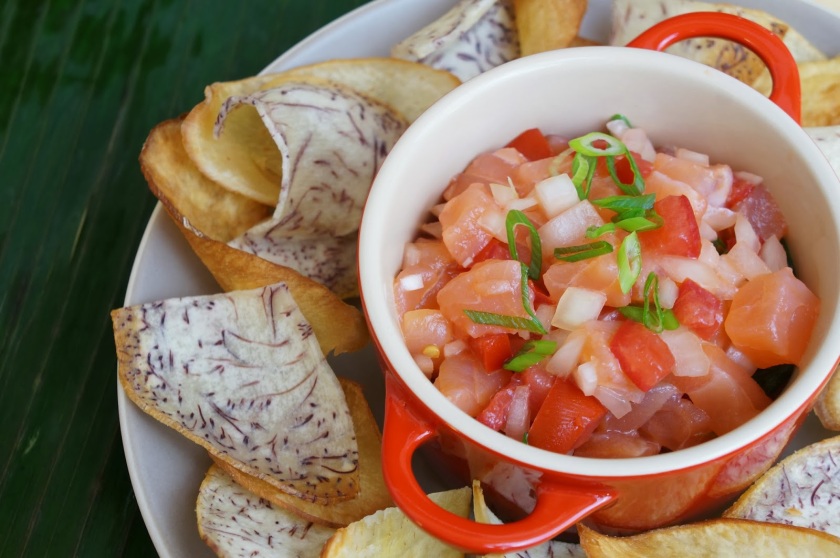(Hawaiian) Okinawan Sweet Potato Pie with Haupia Topping
This pie has a vibrant purple layer made from Okinawan sweet potatoes which are naturally purple, a rich coconut milk layer that has the consistency of firm gelatin though it’s made from only sugar, cornstarch, water, and coconut milk, and a delicate shortbread pie crust. Since the Okinawan sweet potatoes taste similar to chestnuts or taro, it is reminiscent in flavor (but not texture) to a Chinese-style sponge cake filled with a chestnut purée. It can be made any time of the year; it would be fun to serve as an unusual Hawaiian-inspired alternative to the traditional Thanksgiving sweet potato pie. Okinawan sweet potatoes have tan or brown skin and a dark purple flesh that becomes even more vibrant when cooked. They have a dry dense texture, taste sweet, and their flavor is similar to chestnuts or taro. They are most likely to be found in Hawaiian or Japanese grocery stores. This pie must be made with Okinawan sweet potatoes; other types of yam or sweet potatoes cannot be substituted because their flavor and texture is very different. Source: Modified from …










